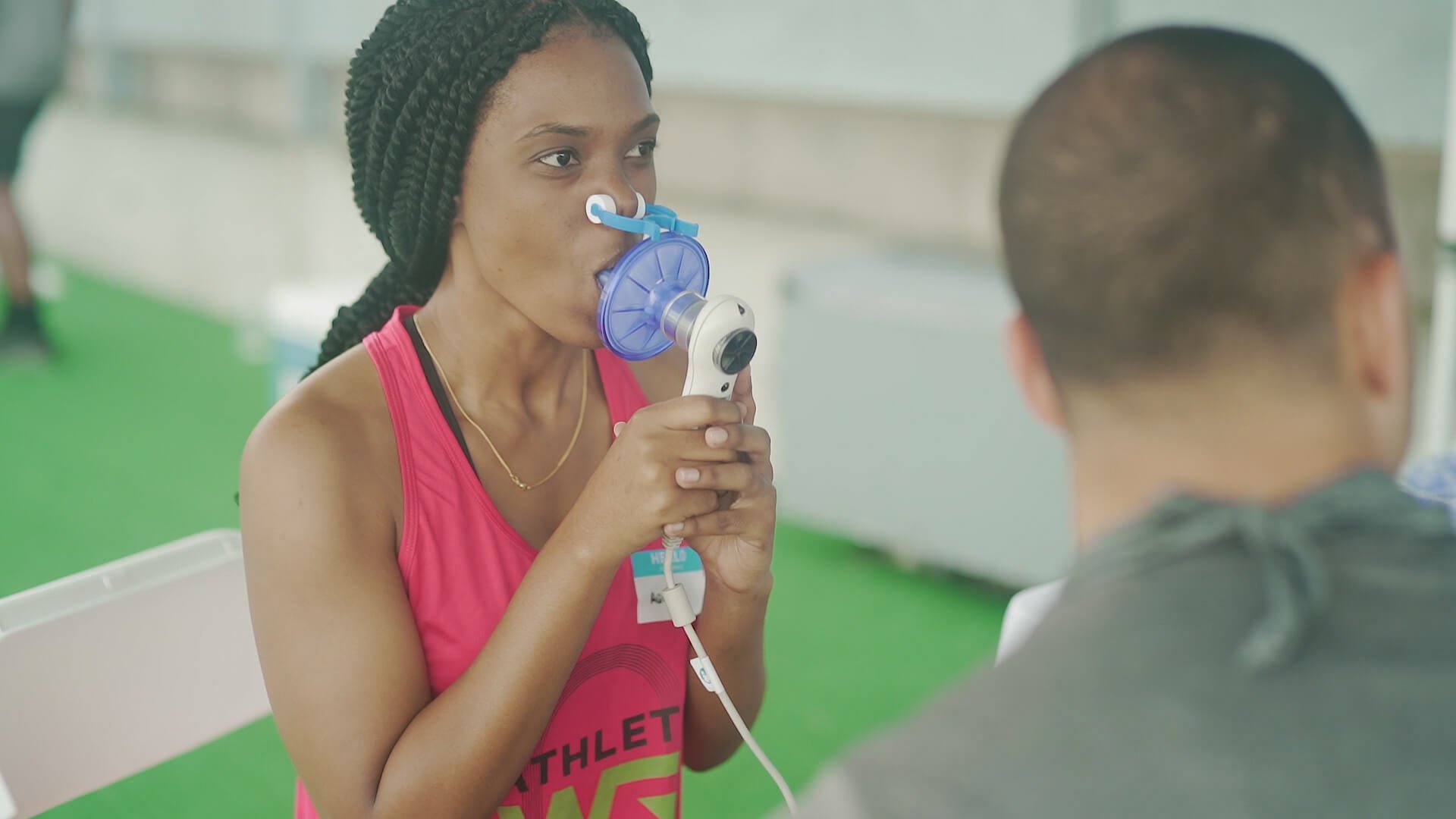Field Notes from the First WorkRate Pilot
A Systems-Based Approach to Performance Diagnostics
Setting the Scene
July 24, 2021 – Icahn Stadium, New York City
On a warm summer morning on Randall’s Island, a team of athletes, coaches, and physiologists assembled for WorkRate’s inaugural field test. The goal was ambitious but focused: evaluate whether targeted, data-driven interventions could shift both joint mechanics and pulmonary function in real time—not in a lab, but in the environment where athletes train and compete.
While testing unfolded on the track in New York, the rest of the WorkRate team was online at 3 a.m. in Sydney, Australia, analyzing the incoming data as it flowed through the WorkRate platform in real time. Thousands of miles away, they were syncing live with field inputs—flagging insights, adjusting feedback loops, and validating the system under pressure.
This pilot wasn’t about proving final outcomes. It was about testing a system. Could diagnostics and precise intervention unlock measurable change—right there on the track, with the full WorkRate engine working across time zones?
The Testing Protocol
Each athlete moved through two baseline assessments:
Joint Range of Motion (ROM): Goniometric measurements were used to evaluate key mobility markers in the hips and shoulders—areas directly tied to stride mechanics and injury risk.
Pulmonary Function Testing (PFT): Using a Cosmed microQuark spirometer, we measured lung volumes and flow rates, including Forced Vital Capacity (FVC), Forced Expiratory Volume in 1 second (FEV1), and Maximal Voluntary Ventilation (MVV).
From this data, athletes received individualized corrective protocols—short, specific routines to address their particular constraints. They completed their exercises onsite and were then retested using the same tools.
The Results
The changes were immediate and measurable.
Mobility Improvements
Right Hip Abduction (Female): ↑ 11° → +18.33%
Left Hip Abduction (Male): ↑ 8° → +15.69%
Right Shoulder Flexion (Male): ↑ 13° → +8.72%
Left Hip Abduction (Female): ↑ 6° → +10.53%
Right Hip Abduction (Male): ↑ 8° → +18.18%
These improvements weren’t marginal—they were clinically significant, especially considering they occurred after a single brief intervention. Enhanced hip abduction, in particular, has direct implications for running stability and injury prevention, especially in rotational sports and high-load gait patterns
.
Pulmonary Capacity Gains
Pulmonary MVV (Female): ↑ 9.87 L/min → +8.33%
Pulmonary MVV (Combined): ↑ 7.64 L/min → +6.10%
Pulmonary MVV (Male): ↑ 3.2 L/min → +2.30%
MVV is a measure of how much air a person can move through their lungs in one minute. The gains seen here reflect improvements in breathing efficiency, control, and coordination—key metrics for sustained aerobic performance.
What the Athletes said:
“It was easier to find rhythm—not just with my breath, but with my stride.”
“I felt like I could breathe more freely”
The First Running Efficiency Test (RET)
This pilot also served as the first live implementation of what would become the Running Efficiency Test (RET). Without treadmills or gas exchange machines, we turned to accessible tech: smartphone GPS apps and Polar H10 chest straps.
We guided each athlete through progressive effort stages, observing:
Heart rate trends
Cadence and pace changes
Form breakdowns and recoveries
Despite minimal tech, the RET exposed how mechanical efficiency declined under load—highlighting clear thresholds where breathing patterns shifted and movement quality faltered. These insights later became the foundation of WorkRate’s wearable-integrated diagnostic protocols.
Immediate Learnings
From a single day of testing, several key insights emerged:
Pulmonary and mechanical systems are deeply interconnected. Improvements in joint range of motion often coincided with easier, more efficient breathing.
Data-driven interventions produce immediate change. Across ROM and MVV metrics, measurable improvements followed short, targeted corrective protocols.
Simple wearables, guided by precise protocol, yield rich performance data—sufficient to assess efficiency, adaptation, and readiness in the field.
Athlete feedback aligned with diagnostics. Nearly all participants reported improved breathing rhythm, smoother motion, or increased stability post-test.
Data Summary: Top Physiological Changes
Below is a visual summary of the most significant changes from the day:
Conclusion
The WorkRate pilot at Icahn Stadium offered more than just a proof of concept. It demonstrated that human performance is not siloed into respiratory or mechanical compartments—it’s a systems problem, best solved by systems thinking.
And perhaps most importantly, it reminded us that meaningful change doesn’t require a lab. It requires clarity, precision, and the willingness to test in the wild.
This was just the first run. We’ll be back—with more athletes, more questions, and a better system.




